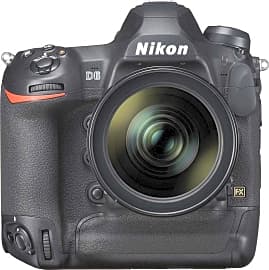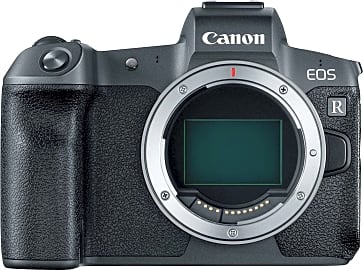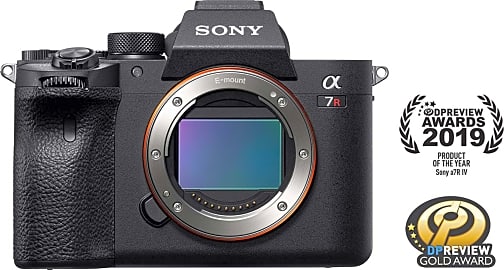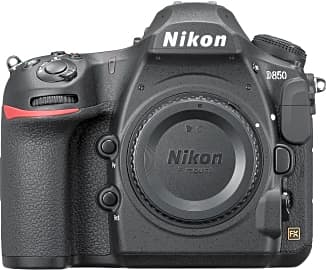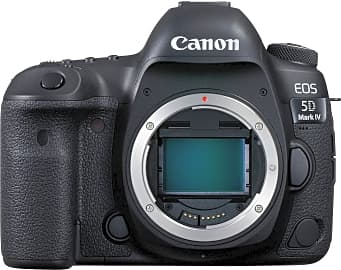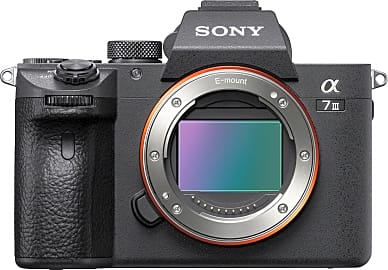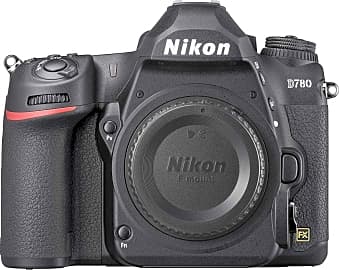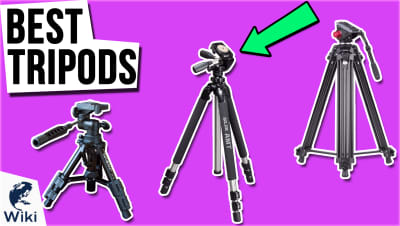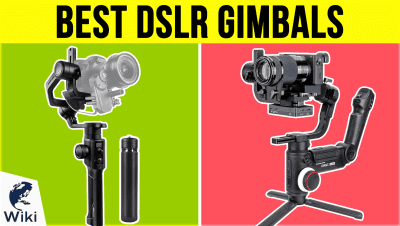The 10 Best Full-Frame Cameras

This wiki has been updated 36 times since it was first published in September of 2016. Making the jump to full-frame photography can be frightening, as it often requires you to purchase a few new lenses, get used to a different crop factor, and improve your skills in post. But the feeling you get when you take that first picture and see its incredible detail and dynamic range will make all your initial trepidation disappear and make all your effort and expense worthwhile. When users buy our independently chosen editorial picks, we may earn commissions to help fund the Wiki.
Editor's Notes
March 18, 2021:
The most notable development this category saw during this round of updates was a change in name, evolving from Full-Frame DSLR Cameras to the more succinct Full-Frame Cameras, which gives some legitimacy to our inclusion of several, excellent, mirrorless models on this list, including the Canon EOS R and Sony a9 II.
Beyond that, being as we’d already introduced several upgraded picks last year, after reviewing our existing choices and determining that they were almost all to our satisfaction, there wasn’t much else for us to do, but we did replace the Nikon Z7 with its logical successor, the Nikon Z7 Mark II. While we did highlight some of the improvements offered by this new model – like a better battery life and the addition of eye-tracking technology – I couldn’t help but notice that the added value offered by this upgrade seemed to be rather sparse.
Both bodies use the same 46-megapixel sensor and share many of the same ratings, ultimately offering much of the same utility. Did it still make sense to include the Mark II on this list, as a better model? Of course. But, if you already own the Z7, I don’t know that I’d be rushing out to replace it. And, if you’re interested in a Nikon, but dealing with a tight budget, then consider rolling with the original model, and save yourself about 20% on the up front cost.
Once you’ve picked out your next aspirational camera, don’t stop there, we also maintain many sets of rankings for camera accessories, including lists of bags, tripods, gimbals and shoulder rigs.
March 03, 2020:
There have been some significant additions to the market since this list last saw an update, including the introduction of new top-tier models from Nikon and Canon in the Nikon D6 and the Canon EOS-1D X Mark III, both of which have improved autofocus systems and silent shutter functions with high-burst rates when shooting in live view mode (with the Canon winning out in both speed and buffer limit).
Both companies also introduced pro-level mirrorless models in the Canon EOS R and the Nikon Z7. These will likely live behind the prestige of their traditional DSLRs until their dedicated lens lineups begin to catch up in quality. Both can be purchased with adapters for use with any glass you might already own, but the whole point of a mirrorless system is to get smaller and lighter, not more complicated and cumbersome.
To make room for these models we removed the somewhat outdated and underperforming Pentax K1 II and the Canon 6D II, the latter of which, even after an upgrade, still struggled to produce the kind of image quality that immediately impresses shooters the first time they start using a full-frame camera. This is especially present in the device's dynamic range.
Finally, Sony appears content to never update their beloved a7S series, turning instead to the a7R lineup for all their latest videographic developments. If you're a Sony cinematographer and you're holding out for that a7S III, it's probably never coming, and the R IV boasts superior features to whatever you thought the S III would have been years ago, anyway. Grab that one and you'll be happy.
Special Honors
Phase One XF IQ4 The price tag is sure to send most running in the other direction, but for those who can afford it, the XF IQ4 is an impressive machine that's unlikely to disappoint. Its 151-megapixel sensor makes super-large prints and ultra-close cropping possible on a level that most cameras can't compete with. phaseone.com
Hasselblad H6D-400C MS Coming from a renowned Swedish camera company, this model offers stunning resolution by combining a 100-megapixel sensor with multi-shot technology to capture the equivalent of 400-megapixel images. As you might imagine, the results are incredibly crisp and completely free of moiré. hasselblad.com
Why Make The Jump To Full Frame?
When shooting wide — at an indoor event like a family party, for example — it’s a huge disadvantage.
If you’re in the middle of your research into full frame DSLR cameras, you probably fall into one of two camps. You either already own a camera and are looking to upgrade, or you’re about to buy your first camera, and you want to start at the top of the market. True, there are cameras out there that exceed the potential of full frame DSLRs, but these are usually reserved for photographers whose work garners obscene amounts of money — most of which they spend on those very cameras.
For the rest of humanity, our selection represents the cream of the crop factor. That pun brings us to our first reason to make the jump to full frame: no more math. If you have a camera with interchangeable lenses and a sensor any smaller than full frame, you’ve already dealt with this issue.
For example, a lot of consumer and entry-level DSLRs utilize APS-C sized sensors. These are the next best thing after full frame, and many of them will take professional-quality photos. Because the sensor is smaller, however, it suffers from a crop factor. The APS-C crop factor is roughly 1.5. That means that a 35mm lens won’t actually give you a 35mm focal length. Instead, it’ll give you 1.5x that, which is about 52.5mm. At the telephoto end, this is actually an advantage of the smaller sensor. When shooting wide — at an indoor event like a family party, for example — it’s a huge disadvantage.
Other benefits of full frame sensors include improved dynamic range, better low light performance, and access to the best lenses by renowned manufacturers. Improved dynamic range means that your images will have more detail in both their shadow and highlight areas. You’ll see better low light performance because the pixels on a full frame sensor have a superior pixel pitch (they’re larger) than the same amount of pixels packed tightly onto a smaller sensor. As for those lenses, well, we’ll get to that below.
What To Expect From Your New Full Frame DSLR
When you finish unboxing your brand new full frame camera, you’ll begin to notice some interesting things about it right from the start. To begin with, it’s probably bigger than your previous camera. That sensor requires a larger housing and, in traditional DLSR designs, a larger mirror and pentaprism. If you have big hands, it’s liable to feel pretty comfortable and secure in them. If not, you may want to invest in some kind of strap or harness for the camera’s safety.
Because full frame cameras represent a higher class in the market, manufacturers don’t see much of a use for low-end glass.
If you already have a selection of lenses for whatever brand you choose, you may find that some of them aren’t built for full frame sensors. APS-C sensors are so popular (they were the first size of digital sensor manufactured by Nikon and Canon), that there’s an entire series of lenses within each brand made just for the smaller sensor. On a full frame camera, these lenses can’t fill the sensor with light, and you’re left with exaggerated vignetting. With a short menu dive, you’ll find a setting that automatically crops these images to their APS-C size. You won’t get the full benefit of your new camera’s sensor, but you’ll still be able to shoot while you save up for new glass.
When you do get around to buying some new full frame lenses, you’ll find that these are larger, as well. Because full frame cameras represent a higher class in the market, manufacturers don’t see much of a use for low-end glass. Even the least expensive full frame lenses often cost about as much as an entry-level DSLR, with the best among the glass costing far more that whatever you'll pay for your new camera body.
Another aspect of your shooting life that’s liable to increase in size are your files. Full frame cameras, especially when their sensors boast a large number of pixels, produce very big files. That could necessitate upgrades to other parts of your workflow, as well, from memory cards and hard drives to whatever computer you use to edit your images.
Smaller In The Mirror
If it sounds like everything about the jump to full frame results in an increase in size, then you understand the mindset of the engineers who developed the full frame mirrorless camera. While these cameras aren’t DSLRs by the strictest definition, the market treats them as such. They are in direct competition with the heights of production from Nikon and Canon, and they have, in many ways, eclipsed those two brands.
That adds a great deal of height, weight, and depth to the design of a camera body.
Sony is currently the undisputed full frame mirrorless king. Their a7 series of cameras brought a downsized body to consumers who didn’t like how enormous the full frame world had become.
The mirror in a camera is usually the same size as its sensor, and it spends the vast majority of its life sitting above that sensor at a roughly 45-degree angle. It has to physically jump out of the way and into a little hiding place whenever you take a picture. That adds a great deal of height, weight, and depth to the design of a camera body.
Of course, the mirror used to be a necessity. It was the only way you could see what the lens could see. But now, with the quality of the electronic viewfinders on the market, that mirror seems less and less like an asset.
The downside to the mirrorless movement is that, for the time being, they don’t have a quality selection of lenses that can compete with those of Nikon and Canon. There are adapters out there that allow you to slap almost any conceivable lens onto a mirrorless camera, but unless you’re using expensive rangefinder lenses, you’re going to end up right back at that size problem again.
So, should you buy mirrorless? If you shoot many more stills than movies, then probably not yet. If you’re investigating these DSLRs for video applications, however, then it’s as good a choice as any.



